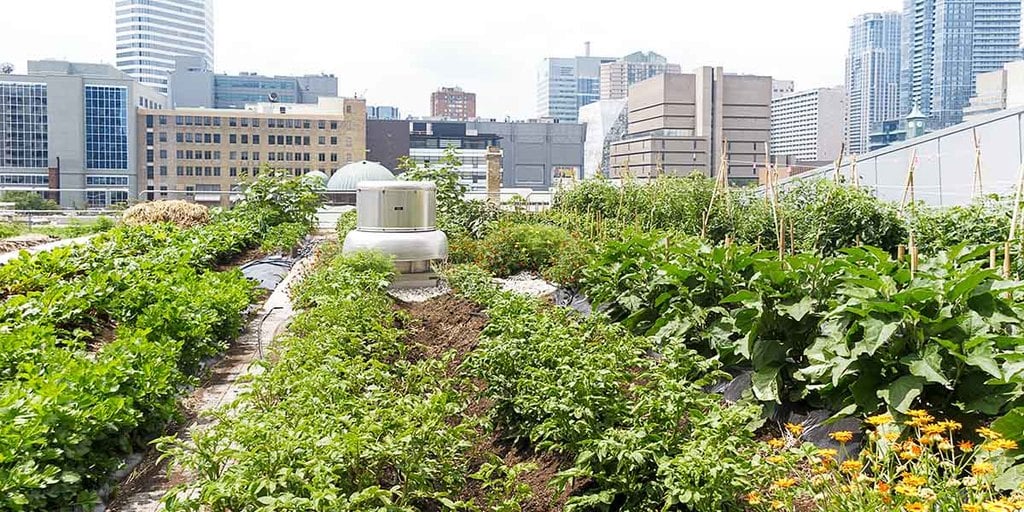City Blooming - Truths
City Blooming - Truths
Blog Article
The Single Strategy To Use For City Blooming
Table of ContentsThe Main Principles Of City Blooming The Ultimate Guide To City BloomingGetting My City Blooming To WorkThe Ultimate Guide To City BloomingAll About City Blooming
Fascinated in growing food to buy in the City of Chicago? Considering beginning a neighborhood garden? Changes to the Chicago Zoning Regulation allow agricultural usages like area gardens and city ranches in several components of the city. Below is a listing of frequently asked concerns concerning the regulations and guidelines that growers must take into consideration when intending a metropolitan agriculture task.
The zoning change does not change any type of other codes taking care of composting, structure permits, purchasing or leasing City possessed residential or commercial property, organization licenses or environmental contamination. There are existing codes that manage these problems and they stay completely effect and may apply to your job. Community yards are normally owned or handled by public entities, civic organizations or community-based companies and maintained by volunteers.
Urban ranches grow food that is meant to be marketed, either on a not-for-profit or for-profit basis. As a result of their industrial function, city ranches require a business certificate. Yes. An area yard is allowed to market surplus generate that was grown on site if the sales are accessory or subservient to the garden's key function defined above.
The Definitive Guide to City Blooming
The quantity of garden compost product can not surpass 25 cubic backyards at any type of provided time according to the requirements in 7-28-715 of the City's Municipal Code. Due to the fact that the dirt at most brand-new garden websites requires amending, garden compost, dirt, wood chips, or various other materials can be obtained to create or improve the growing space.

If a structure authorization is needed then the hoophouse will certainly be thought about an accessory building. You can figure out even more about the building authorization demands by calling the Division of Buildings. The 25,000-square-foot dimension limit is intended to stop a single community yard from controling a given block or interfering with the block's existing domestic or commercial character.
The limit does not apply to gardens situated in Public Open Room (POS) districts. Can there be even more than one community garden that is 25,000 square feet on a single block? Fencing is not needed, nevertheless, yards that have big car parking areas may be required to install fencing or other landscaping attributes.
The Ultimate Guide To City Blooming
B1 & B2 districts need that all business usage activities be carried out inside. Is fencing required for city farms? Fencings may be needed, along with landscaping and testing, for particular auto parking locations and view exterior work or storage locations depending on place and the certain task taking location.
Urban ranches require building licenses and zoning authorizations prior to construction (sustainability). Other forms of city review may be required depending on certain structures, tasks, size, landscape design, licensing, public health and stormwater monitoring problems.
The Department of Business Matters and Consumer Protection can aid determine the specific type of company certificate that's required. Off street vehicle parking is needed for most commercial projects in Chicago. The needed number of auto parking rooms is based on the number of employees working on site and not the square video of the growing room.
What Does City Blooming Mean?

A city farm can market garden compost product created on site, however, the procedure has to conform with the regulations in 7-28-715 of the Chicago Municipal Code. Aquaponic systems are allowed inside on city ranches in many zoning areas.
Approximately five hives or colonies of honey might be kept as an accessory usage. Nonetheless, beekeepers must register with the Illinois Division of Agriculture. To find out more regarding the recommended zoning change you may contact the Division of Housing and Economic Growth, Bureau of Planning and Zoning at 312.744.8563.
Farming in cities and metropolitan locations An urban ranch in Chicago. Urban agriculture describes different practices of growing. https://www.quora.com/profile/Daniel-Nold-6, processing, and distributing food in city areas. The term likewise puts on the area tasks of pet husbandry, aquaculture, beekeeping, and gardening in a metropolitan context. Urban farming is identified from peri-urban agriculture, which occurs in backwoods beside suburbs.
A Biased View of City Blooming
, who look for to create social networks founded on a common principles of nature and neighborhood holism. These networks can establish by means of formal institutional assistance, becoming incorporated right into local community planning as a "change town" movement for sustainable metropolitan growth.
Some of the first proof of city farming comes from Mesopotamia.
Report this page